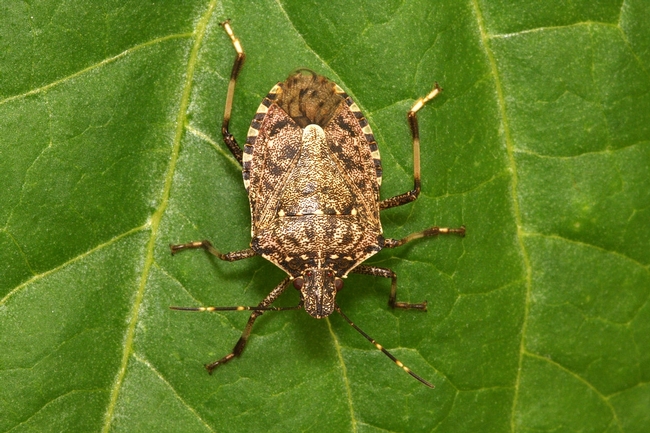
Chuck Ingels, UC ANR Cooperative Extension advisor in Sacramento County, said BMSB was first spotted in 2013 in Sacramento and each year the numbers have grown. This year, the warm spring gave BMSB a head start, portending significant population growth in August and September 2015.
"We're very concerned about tree crops, tomatoes, peppers, corn, beans and other crops," Ingels said. On a bright note, he said California farms do not have forests surrounding them like farmers back East, where growers have been dealing with BMSB since the the mid-1990s. "BMSB is an arboreal species. They live in trees and then come into the farm. We're not sure how much of a problem it will be on farms here (in California)."
Ruyak asked whether any control solutions can be found in the pest's native territory or from farmers back East.
"Growers are using pesticides back East," Ingels said. "There is a parasitoid from China that is under study in labs to see if they pose a problem for native stink bugs and other bugs."
One possible solution for dealing with the pests in gardens is planting sunflowers. Because BMSB are strongly attracted to sunflowers, they may draw the pests away from other crops and allow gardeners to monitor the BMSB presence. On the other hand, sunflowers may actually attract BMSB to the garden, where they could feed on vegetable crops.
BMSB feeds with a mouthpart called a "proboscis," stinging developing fruit 1/4 to 3/8 inch deep and sucking out its juices. As the fruit ripens, it hardens and deforms, becoming inedible.
Read more about BMSB, how to identify it, and methods to manage it around homes and gardens in the UC IPM Pest Note: Brown Marmorated Stink Bug.